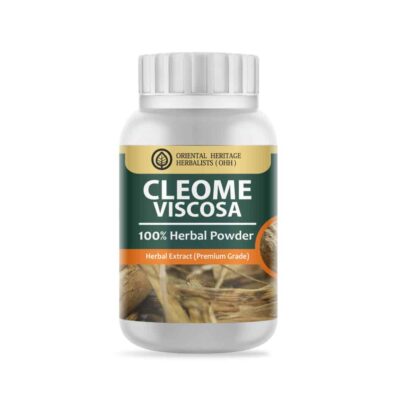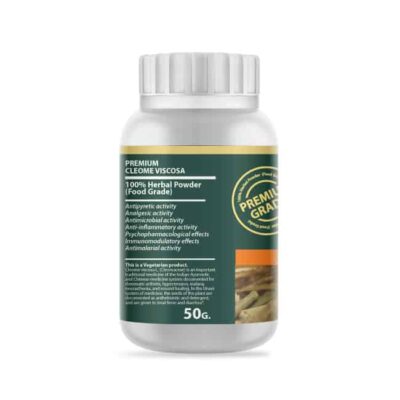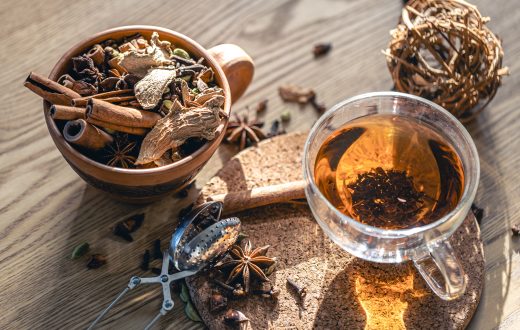In the search for natural, sustainable, and effective ingredients, the cosmetics and supplements industries are increasingly turning to medicinal plants. One plant that has drawn growing attention is Cleome viscosa, also known as the Asian spider-flower or tickweed. Traditionally used in folk medicine for skin conditions, digestive issues, and infections, modern science is uncovering its bioactive compounds that could make it a powerful ingredient in skincare and nutraceutical products. Let’s see the role of Cleome viscosa in cosmetics and supplements industry.
Botanical Overview and Traditional Uses
Cleome viscosa is a sticky annual herb from the Cleomaceae family, commonly found across tropical Asia and Africa. It is recognized for its pungent odor, bright yellow flowers, and seed pods rich in oils. For centuries, traditional medicine systems have used it for:
- Treating wounds, ulcers, and skin infections
- Relieving earaches and respiratory problems
- Reducing fever and inflammation
- Supporting digestive health (e.g., diarrhea, gastric issues)
These long-standing uses align with what modern phytochemical studies are beginning to confirm.
Key Bioactive Compounds
Scientific analysis of Cleome viscosa has revealed a wide range of beneficial compounds:
- Flavonoids & Phenolics (e.g., quercetin, gallic acid): Potent antioxidants that combat free radicals, reduce oxidative stress, and support anti-aging applications.
- Fatty Acids (linoleic, oleic, palmitic, stearic): Found in seed oils, providing emollient, moisturizing, and skin barrier–protecting benefits.
- Imperatorin: A coumarin compound with proven antimicrobial activity against harmful bacteria, useful in anti-acne and preservative formulations.
- Vitamin E (tocopherols): Natural protection against UV-induced damage and lipid peroxidation, supporting both skincare and dietary supplements.
- Collagen-boosting agents: Extracts that stimulate fibroblast proliferation and collagen synthesis, key for wound healing and anti-wrinkle care.
Benefits for the Cosmetics Industry
- Skin Healing and Regeneration
Extracts of Cleome viscosa promote fibroblast activity and collagen production, accelerating wound healing and reducing scarring. This makes it valuable in creams, gels, and serums aimed at skin repair. - Anti-Aging and Antioxidant Care
High levels of flavonoids and vitamin E provide natural protection against oxidative stress, making it ideal for anti-aging creams and serums that target wrinkles and dullness. - Anti-Acne and Antimicrobial Formulations
Imperatorin and other phytochemicals inhibit microbial growth, offering potential in anti-acne products and even natural preservative systems for cosmetics. - Moisturizing and Barrier Protection
Seed oils rich in essential fatty acids act as natural emollients, restoring hydration and strengthening the skin’s lipid barrier. - Hair and Scalp Health
Antimicrobial and anti-inflammatory properties suggest applications in shampoos and scalp treatments to soothe irritation and fight dandruff.
Benefits for the Supplement Industry
- Antioxidant Protection
With high flavonoid and phenolic content, Cleome viscosa can be used in supplements designed to combat oxidative stress and support healthy aging. - Gastroprotective and Digestive Health
Studies suggest extracts protect gastric mucosa and may help reduce ulcers, supporting its use in digestive health formulations. - Liver Support
Research indicates hepatoprotective effects, making it valuable in detox and liver health supplements. - Immune and Anti-Inflammatory Support
Traditional uses and early scientific findings point to anti-inflammatory activity, contributing to immune-support blends.
Industrial Opportunities and Considerations
- Sourcing and Standardization: Bioactive levels can vary depending on soil, geography, and extraction methods. Standardized extracts will be key for industrial use.
- Formulation Challenges: Oils may oxidize without stabilization, and extracts need testing for cosmetic stability.
- Safety and Regulations: Early toxicity studies suggest seed oil is safe, but more clinical trials and dermatological testing are required before wide commercialization.
- Market Potential: With consumer demand for natural, plant-based, and sustainable ingredients growing, Cleome viscosa offers a strong opportunity for both cosmetics and supplements.
Conclusion
From its antioxidant and antimicrobial properties to its skin-healing and digestive-supporting benefits, Cleome viscosa has immense promise as a natural ingredient for the cosmetics and supplements industries. Its seed oils, extracts, and bioactive compounds can be developed into anti-aging serums, wound healing creams, digestive supplements, and immune boosters.
However, the path forward requires further clinical research, regulatory validation, and sustainable cultivation practices. With the right innovation, this humble herb could become a star botanical in natural health and beauty products worldwide.
References
- Boominathan, R., & Sivakumar, R. (2014). In vitro fibroblast growth stimulatory and in vivo wound healing activity of Cleome viscosa. Advances in Traditional Medicine, 14, 269–278. https://doi.org/10.1007/s13596-014-0147-5
- Hussain, S. A., et al. (2010). Protective effect of standardized extract of Cleome viscosa against experimentally induced gastric lesions in rats. Journal of Ethnopharmacology, 127(1), 313–316. https://doi.org/10.1016/j.jep.2009.09.051
- Sangin, P., Phankaeo, M., Saekua, W., & Chaiprasongsuk, M. (2023). Comparative analysis of vitamin E extraction methods in Cleome viscosa L. and the role of key biosynthesis genes. Journal of Applied and Natural Science, 15(3), 1034–1042. https://doi.org/10.31018/jans.v15i3.6846
- Singh, G., et al. (2022). Imperatorin from the aerial parts of Cleome viscosa L.: Characterization study and evaluation of antibacterial activity. Fitoterapia, 160, 105289. https://doi.org/10.1016/j.fitote.2022.105289
- Upadhyay, R. K. (2015). Cleome viscosa Linn: A natural source of pharmaceuticals and pesticides. International Journal of Green Pharmacy, 9(2), 71–78. https://doi.org/10.22377/ijgp.v9i2.441
Visit our website to learn more: Click Here
Related Products
Related Post
From Ancient Remedies to Beauty Science: The Rise of Herbal
In the search for natural, sustainable, and effective ingredients, the cosmetics and.
- 23 October 2025
- 0 Comments
Why Natural Extracts Are Shaping the Future of Cosmetic and
In the search for natural, sustainable, and effective ingredients, the cosmetics and.
- 22 October 2025
- 0 Comments
Acmella Oleracea: The Natural Herb Revolutionizing Cosmetics & Supplement Industries
In the search for natural, sustainable, and effective ingredients, the cosmetics and.
- 21 October 2025
- 0 Comments
Caesalpinia sappan: A Powerful Natural Ingredient for Cosmetics and Supplement
In the search for natural, sustainable, and effective ingredients, the cosmetics and.
- 20 October 2025
- 0 Comments
Butea Superba and Tongkat Ali: Nature’s Boosters in Cosmetics and
In the search for natural, sustainable, and effective ingredients, the cosmetics and.
- 7 October 2025
- 0 Comments









